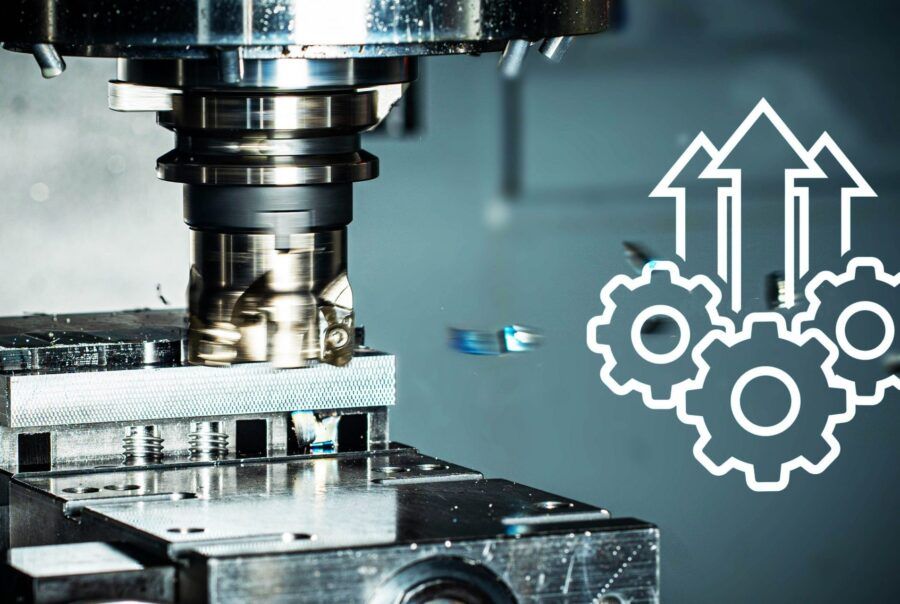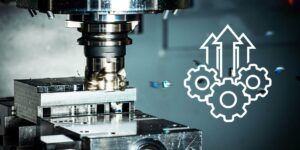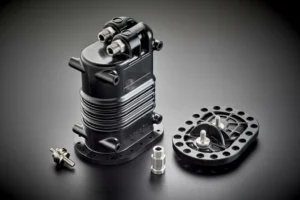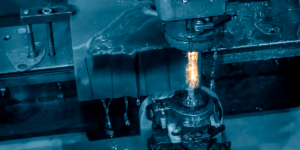Another one of the essential techniques in the production of components is machining. Nowadays, there are various methods of machining at our disposal, all of which serve the purpose of converting raw materials into finished products.
What are the most prevalent machining operations? Here at Idelt, as specialists in this field, we’re here to provide you with all the ins and outs.
What is machining?
This is a subtractive process in which cutting tools are used to remove excess material from a component in a controlled manner until the final piece is obtained. It consists of several stages, such as cutting, marking, pressing, drilling, among others. Typically, this technique is applied to metals, although other materials like wood, plastic, ceramics, etc., can also be used.
The machining process has seen improvement thanks to machines such as lathes, milling machines, and drills. The vast majority of these machining tools used today are manufactured based on the principles of older machines, but additional functions of utmost importance have been incorporated to achieve excellent results.
Enhancements such as numerical control enable various cutting operations to be performed on the same machine. Subsequently, with the emergence of different materials for machining, many of them harder and more resistant, it has become necessary to employ other types of machining, such as electro-erosion machining, ultrasound machining, and abrasive jet machining.
The truth is that as time progresses, we see that improvements are being added to increase productivity while not neglecting surface finishes. There are also improvements aimed at reducing tolerance and, consequently, enhancing precision.
The process concludes when the piece possesses all the characteristics specified in the blueprints for its final use.
The advatages of industrial machining
Ahora bien, en cuanto a las ventajas que ofrece este método podemos mencionar varias. La primera es su gran precisión (baja tolerancia), lo que permite obtener piezas de gran calidad. Es un método funcional, es decir, permite realizar una gran cantidad de piezas en multitud de formas. Se consigue un excelente acabado y textura y se puede realizar con pocas herramientas.
Adicionalmente, es un proceso sencillo de automatizar y no necesita mucho tiempo de preparación. Por último, es importante mencionar que no cambia la estructura del material, lo que significa que la pieza preserva sus propiedades mecánicas.
Machining Operations
Machining operations are categorized into three primary techniques: turning, milling, and drilling. However, within these categories, there are additional methods such as planing, broaching, sawing, and more.
Turning process
The turning process involves a stationary cutting tool while the workpiece rotates. This operation entails the removal of excess material and is well-suited for machining the outer or inner surfaces of a component.
In this case, the cutting tool operates along two moving axes, creating cuts with precise depth and width. Some fundamental operations performed with a lathe include:
- Facing: This process involves machining the front part of the workpiece to achieve a surface at a 90° angle with respect to the axis of rotation. It is often used as a preliminary step before other operations to prepare the surface.
- Turning: Machining is carried out along the entire length of a cylindrical piece, directed towards its axis of rotation. This results in a piece with a reduced diameter and is employed in various operations such as finishing or roughing.
- Pointing: An auxiliary operation in which the shape of the tailstock tip is machined to adapt it to the workpiece’s tailstock tip.
- Roughing: The objective here is to remove the majority of material to define the piece to a greater or lesser degree.
- Boring: This is a turning operation applied to the interior of the workpiece. Prior to this, a hole is drilled using a drill bit. Boring is used to enlarge a concentric hole.
Milling
Milling is one of the machining operations that involves the use of rotary cutters to remove material from the workpiece. Within this process, two primary types exist: face milling and cylindrical milling.
In face milling, the milling machine’s rotation axis is positioned at a 90° angle with respect to the surface of the workpiece to be machined. Most of the material is removed using its peripheral edges, and the milled surface is refined with the front edges.
On the other hand, in cylindrical milling, the cutter’s rotation axis is aligned parallel to the area of the workpiece to be machined. In this case, the cutter removes material with the teeth located around its circumference.
Drilling
Lastly, we have drilling. In this machining operation, the drill bit creates or refines holes depending on their diameter and depth. The workpiece is responsible for the cutting motion, as it rotates and moves linearly. Drilling can be performed using drill presses, but it can also be accomplished with milling machines and lathes.
Drilling can be executed in various ways, depending on the power source, the supporting structure, and other factors. Additionally, different types of drilling can be applied, such as spot drilling, deep hole drilling, high-speed drilling, vibration drilling, and micro-drilling.
Experts in machining techniques
Idelt stands as the ideal choice for crafting your products from the ground up. We boast an array of cutting-edge technologies with outstanding capabilities to facilitate your product or component development process. Among these technologies, machining takes center stage, enabling us to swiftly and efficiently industrialize your projects.







